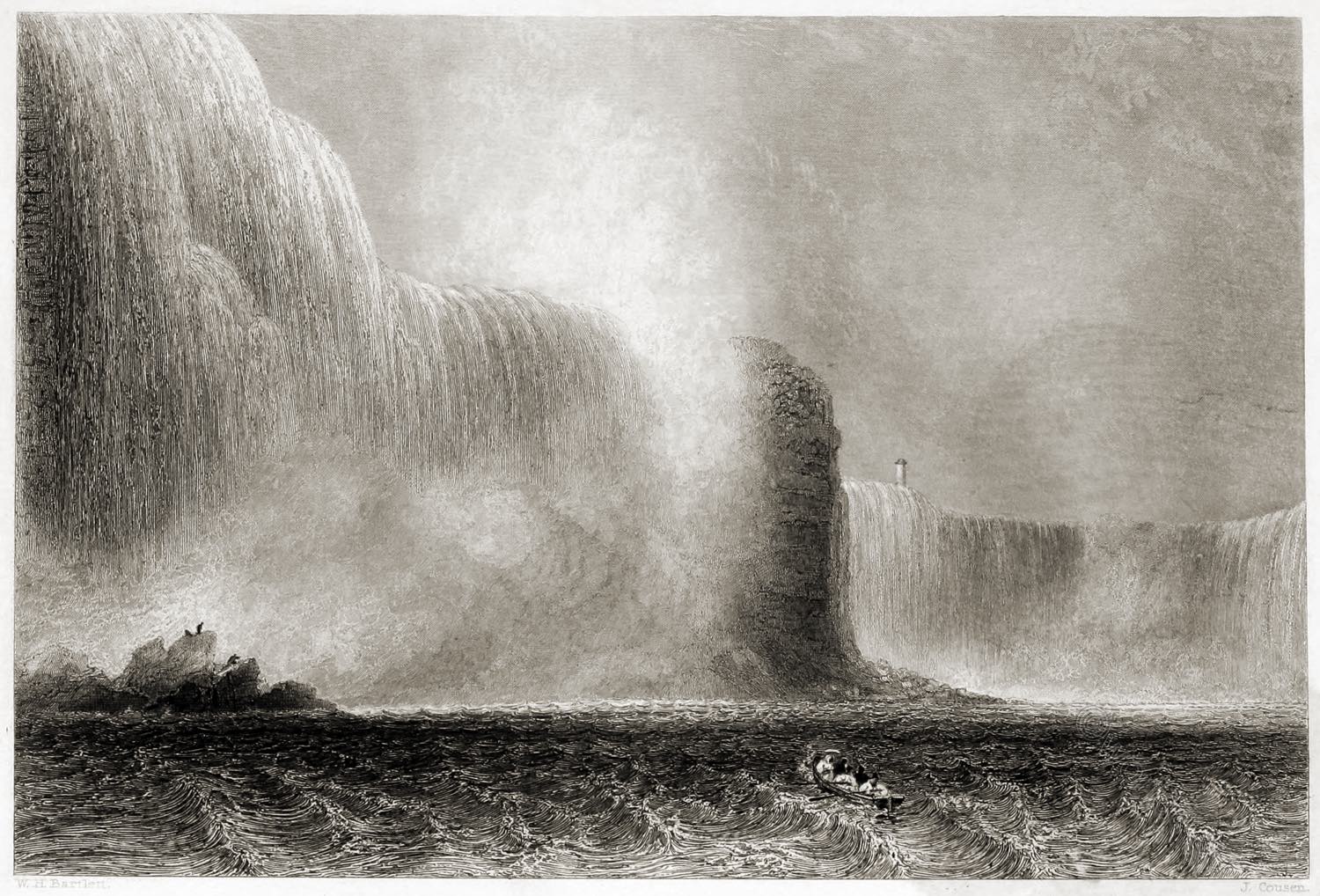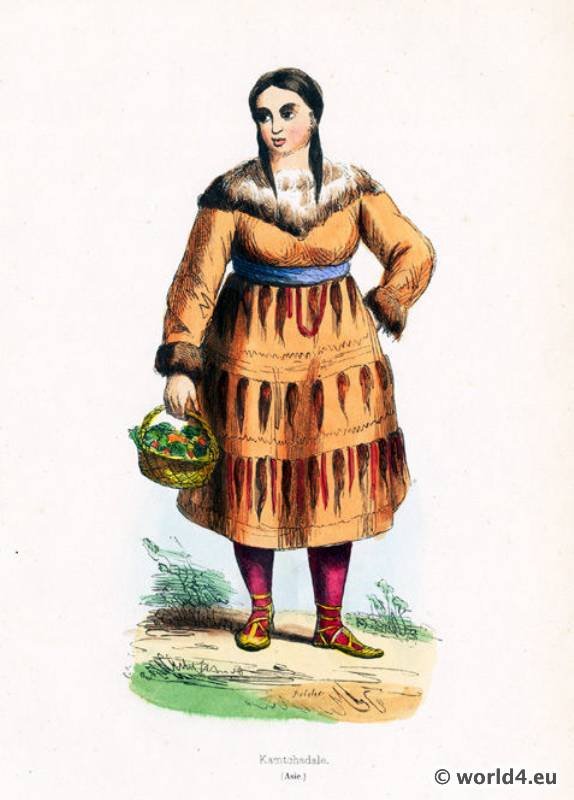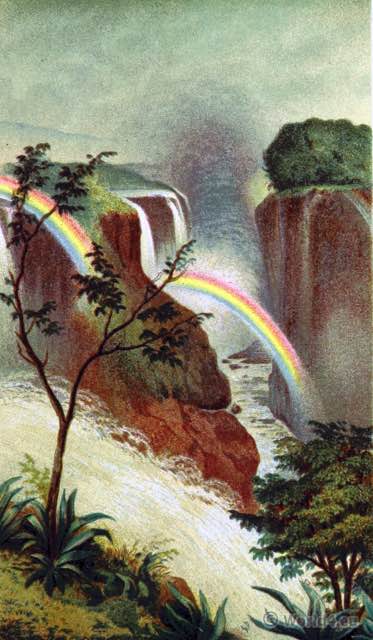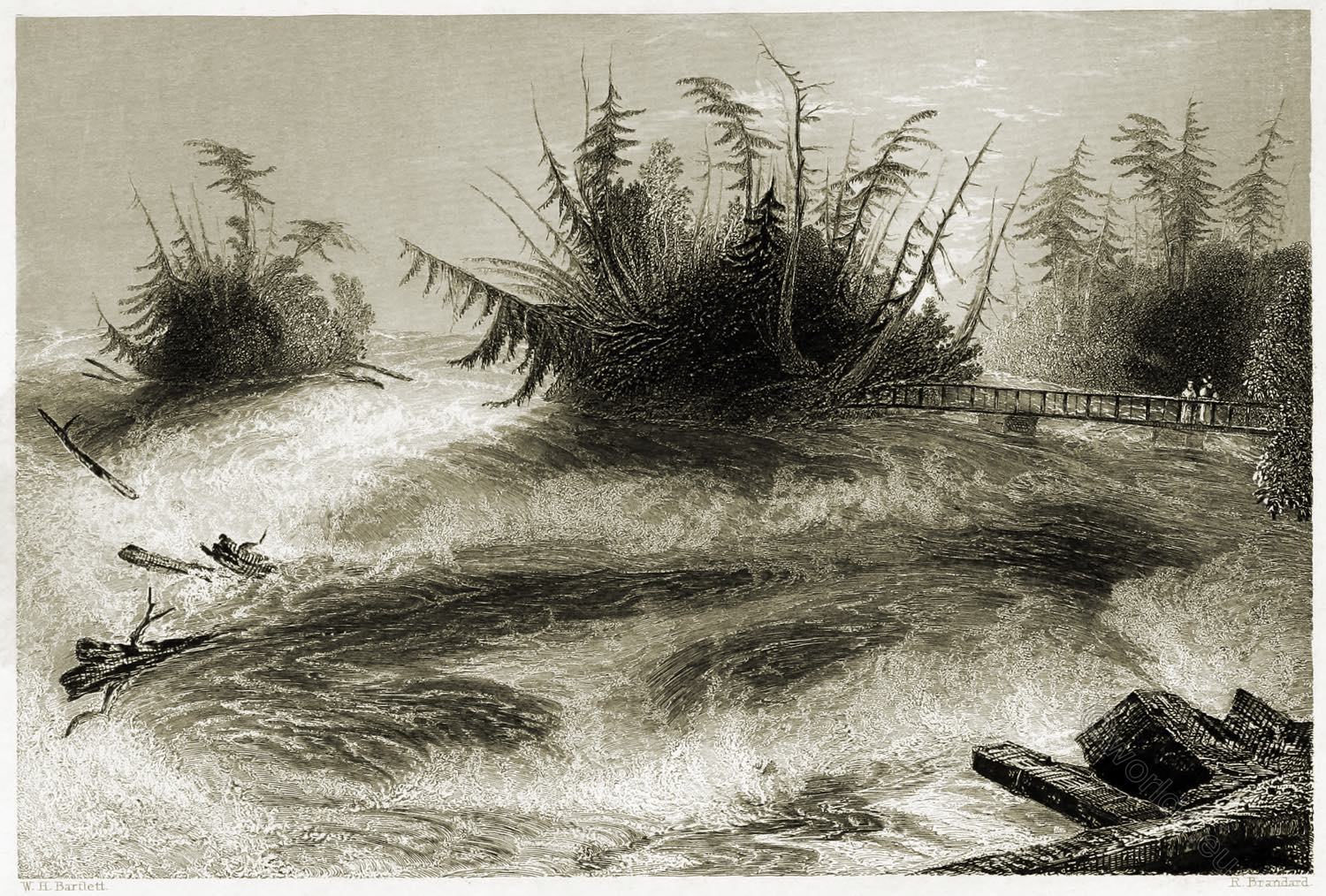
NIAGARA FALLS, FROM THE FERRY.
The best way to approach Niagara is to come up on the American shore, and cross at the ferry. The descent of about two hundred feet by the staircase, brings the traveller directly under the shoulder and edge of the American fall the most imposing scene, for a single object, that he will ever have witnessed. The long column of sparkling water seems, as he stands near it, to descend to an immeasurable depth, and the bright sea-green curve above has the appearance of being let into the sky.
The tremendous power of the Fall, as well as the height, realizes here his utmost expectations. He descends to the water’s edge, and embarks in a ferry-boat, which tosses like an egg-shell on the heaving and convulsed water; and in a minute or two he finds himself in the face of the vast line of the Falls, and sees with surprise that he has expended his fullest admiration and astonishment upon a mere thread of Niagara—the thousandth part of its wondrous volume and grandeur.

From the point where he crosses, to Table Rock, the line of the Falls is measurable at three quarters of a mile and it is this immense extent which, more than any other feature, takes the traveller by surprise. The tide at the Ferry sets very strongly down, and the athletic men who are employed here, keep the boat up against it with difficulty. Arrived near the opposite landing, however, there is a slight counter-current, and the large rocks near the shore serve as a breakwater, behind which the boat runs smoothly to her moorings.
It may be remarked, that the well-known stanzas on the “Fall of Term,” in the fourth canto of “Childe Harold,” are, in many respects, singularly and powerfully descriptive of Niagara.
“The roar of waters!—from the headlong height
Velino cleaves the wave-worn precipice;
The fall of waters! rapid as the light
The flashing mass foams shaking the abyss;
The hell of waters! where they howl and hiss,
And boil in endless torture; while the sweat
Of their great agony, wrung out from this
Their Phlegethon, curls round the rocks of jet
That gird the gulf around, in pitiless horror set,
“And mounts in spray the skies, and thence again
Returns in an unceasing shower, which round,
With its unemptied cloud of gentle rain,
Is an eternal April to the ground,
Making it all one emerald: —how profound
The gulph! and how the giant element
From rock to rock leaps with delirious bound,
Crushing the cliffs, which, downward worn and rent
With his fierce footsteps, yield in chasms a fearful vent
“To the broad column which rolls on, and shows
More like the fountain of an infant sea
Torn from the womb of mountains by the throes
Of a new world, than only thus to be
Parent of rivers, which flow gushingly,
With many windings through the vale: —Look back
Lo! where it comes like an eternity,
As if to sweep down all things in its track,
Charming the eye with dread,—a matchless cataract,
“Horribly beautiful! but on the verge,
From side to side, beneath the glittering morn,
An Iris sits, amidst the infernal surge,
Like Hope upon a death-bed, and, unworn
Its steady dyes, while all around is torn
By the distracted waters, bears serene
Its brilliant hues with all their beams unshorn:
Resembling, ‘mid the torture of the scene,
Love watching Madness with unalterable mien.”
BYRON.
Source: American Scenery; or, Land, Lake, and River Illustrations of Transatlantic Nature. From Drawings by W. H. Bartlett. Engraved by R. Wallis, J. Cousen, Willmore, Brandard, Adlard, Richardson, &c. The Literary Department By N. P. Willis, Esq. London: George Virtue 26, Ivy Lane. 1840.

Continuing
Discover more from World4 Costume Culture History
Subscribe to get the latest posts sent to your email.






